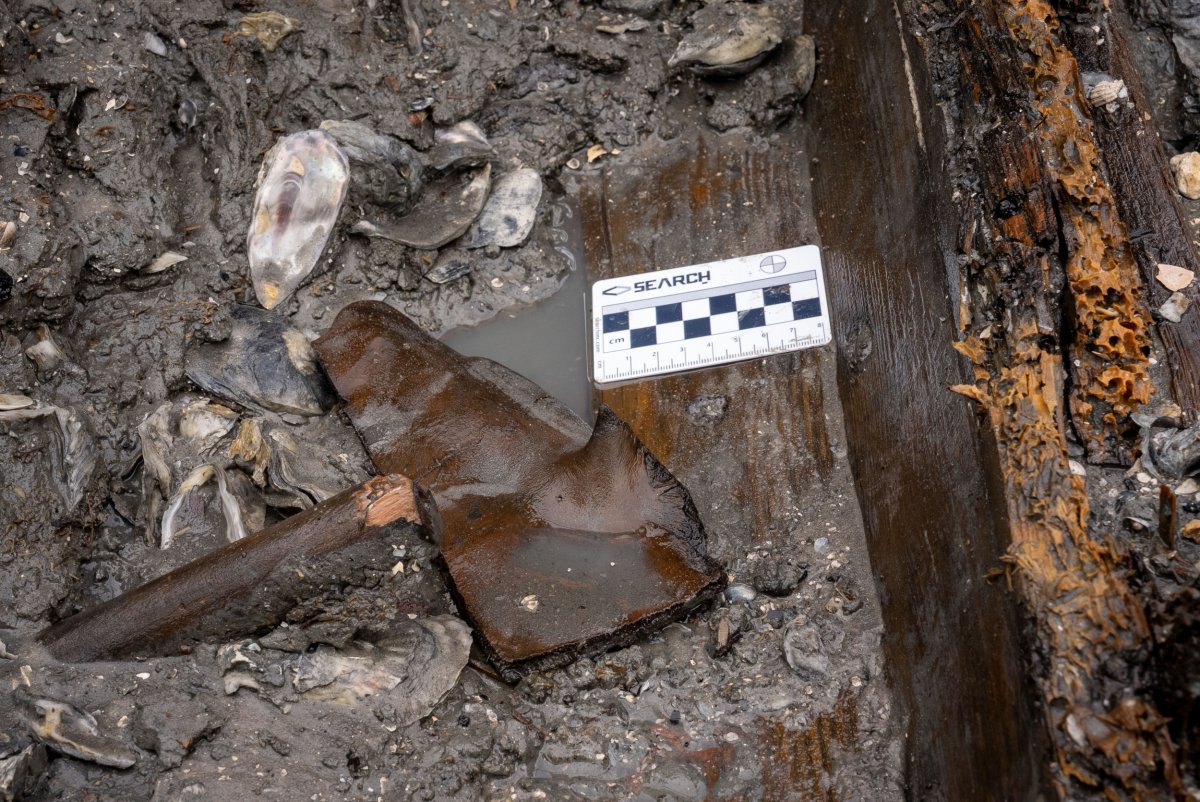A mysterious shipwreck dating back 150 years, containing several artifacts including shoes, has been discovered near a bridge in Florida.
The near complete shipwreck was discovered near the Bridge of Lions in St. Augustine, buried under 8 to 10 feet of sediment, during construction works, the Florida Department of Transportation reported.
The 20-foot-long wreck was carefully extracted by archeologists, who discovered multiple artifacts onboard, including a left shoe made of leather. So far, it is believed to have come from the 1800s. But no other details are clear.
"We had no indication that the vessel was present," Ian Pawn, archeologist at the Florida Department of Transportation, told Newsweek. "The vessel was buried under nearly 8-10 ft of sediment and later St. Augustine development, such as the eastward extension of the seawall, fill, and portions of the early 20th century trolley station. A large palm wood piling was even driven through the vessel (likely for tying off ships), indicating that the vessel was not known even in [the] later 19th century/early 20th century."

Pawn said that, without identifying markings, it is difficult to know exactly where the ship came from.
"A great deal of research still has to be done, and we may never know these exact details," he said.
Archeologists do know however, that it was likely a sailing boat. While the boat's deck and hull was "mostly well preserved" no mast was found.

"The vessel is what is known as vernacular, which means it was likely built locally, with local materials, for domestic use. The artifacts, many located atop the buried vessel, helped confirm the initial dating of the vessel," Pawn said. "Finds included leather shoes (including different shoes for left and right, a 19th century innovation), coins (one dated to 1869), coconut halves that were likely used as cups, and a portion of an oil-fired lantern."
At the moment, archaeologists are working to "stabilize the vessel." Pawn said that when an object is found "this well preserved" archeologists only have a short amount of time to extract it. This is because the drying of the wood will begin the decaying process.
"The boat was disassembled, plank by plank, and removed, with great care to keep each portion wet," Pawn said. "The pieces will be observed in wet storage to stabilize as we determine future preservation effort. We will be working closely with archaeologists and the City of St. Augustine to find a permanent home for this unique find."
Founded in 1565, St. Augustine prides itself on being "the oldest continuously occupied settlement of European and African-American origin in the United States."
Do you have a tip on a science story that Newsweek should be covering? Do you have a question about this shipwreck? Let us know via science@newsweek.com.
Uncommon Knowledge
Newsweek is committed to challenging conventional wisdom and finding connections in the search for common ground.
Newsweek is committed to challenging conventional wisdom and finding connections in the search for common ground.
About the writer
Robyn White is a Newsweek Nature Reporter based in London, UK. Her focus is reporting on wildlife, science and the ... Read more





